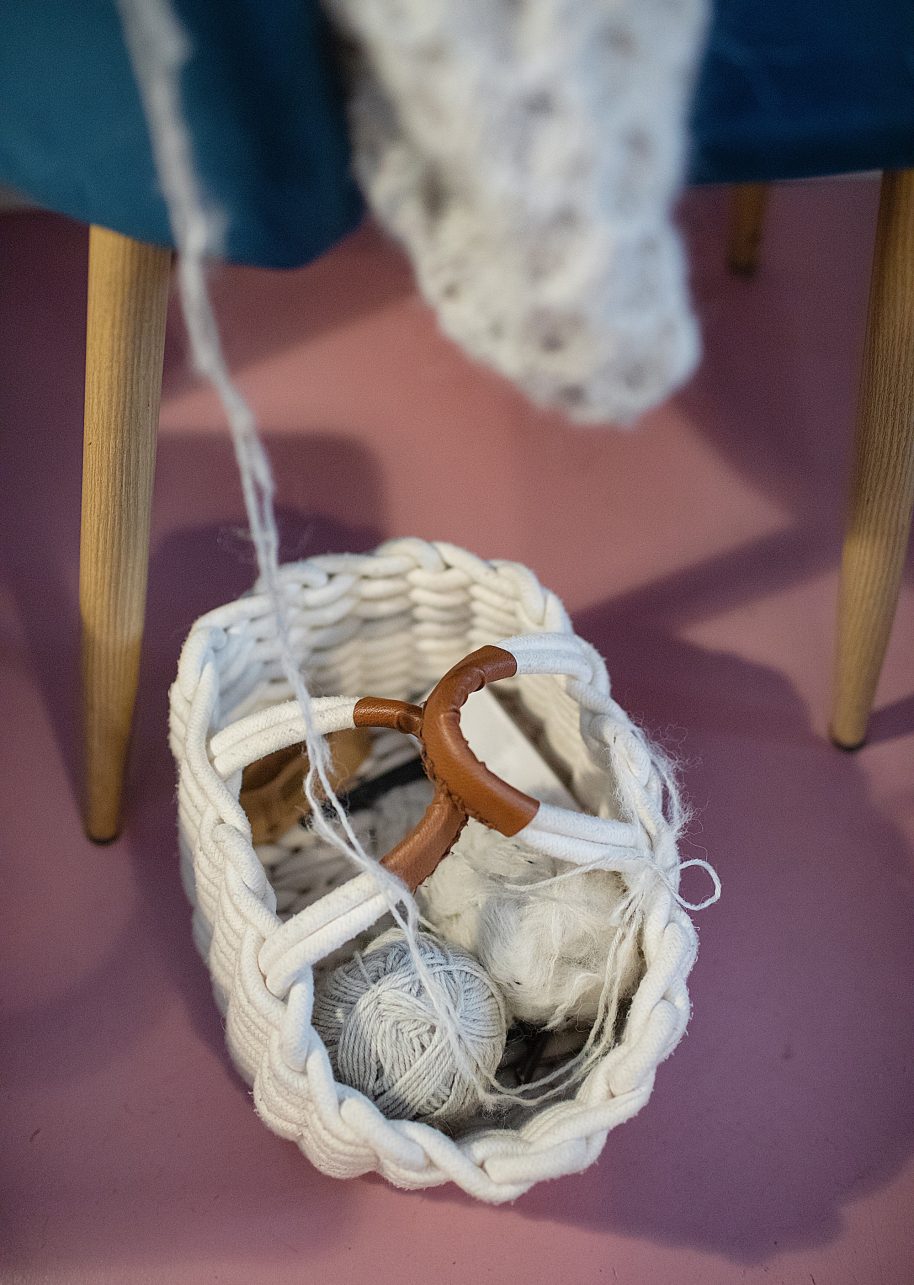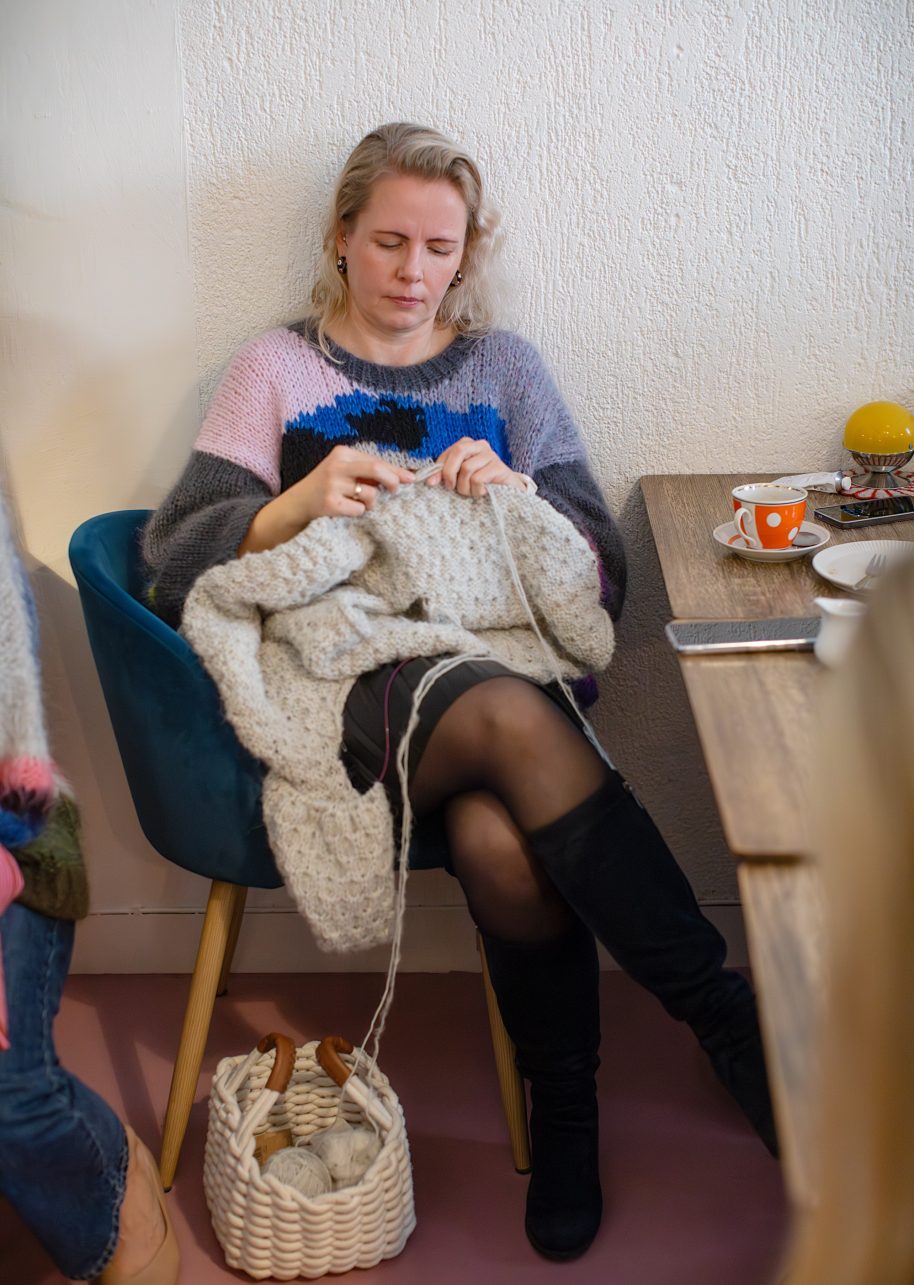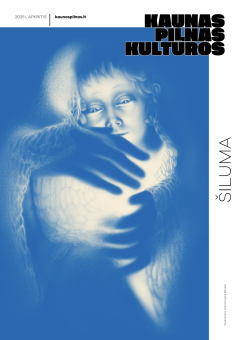It seems that the search for new hobbies becomes more active in the fall. Maybe because of the desire to let go of the summer, maybe due to the longing for routine, or perhaps because of the desire for new experiences and beginnings. The ones that come back unwittingly become extremely popular once again. From yoga or Pilates to ceramics or knitting, which have captivated both those who are looking for peace and quiet and those seeking a real challenge.
One of the most active promoters of this wonderful, slow craft – knitting – is Gintarė Murauskienė, better known on social media as Knitomanija. Although the woman living in Vilnius is a translator by profession, she is also a dedicated seeker of warmth, who discovered herself as a knitter three years ago. This activity has become not only a part of her daily life but also a platform that helps her talk about important things, which is exactly what we discussed together.
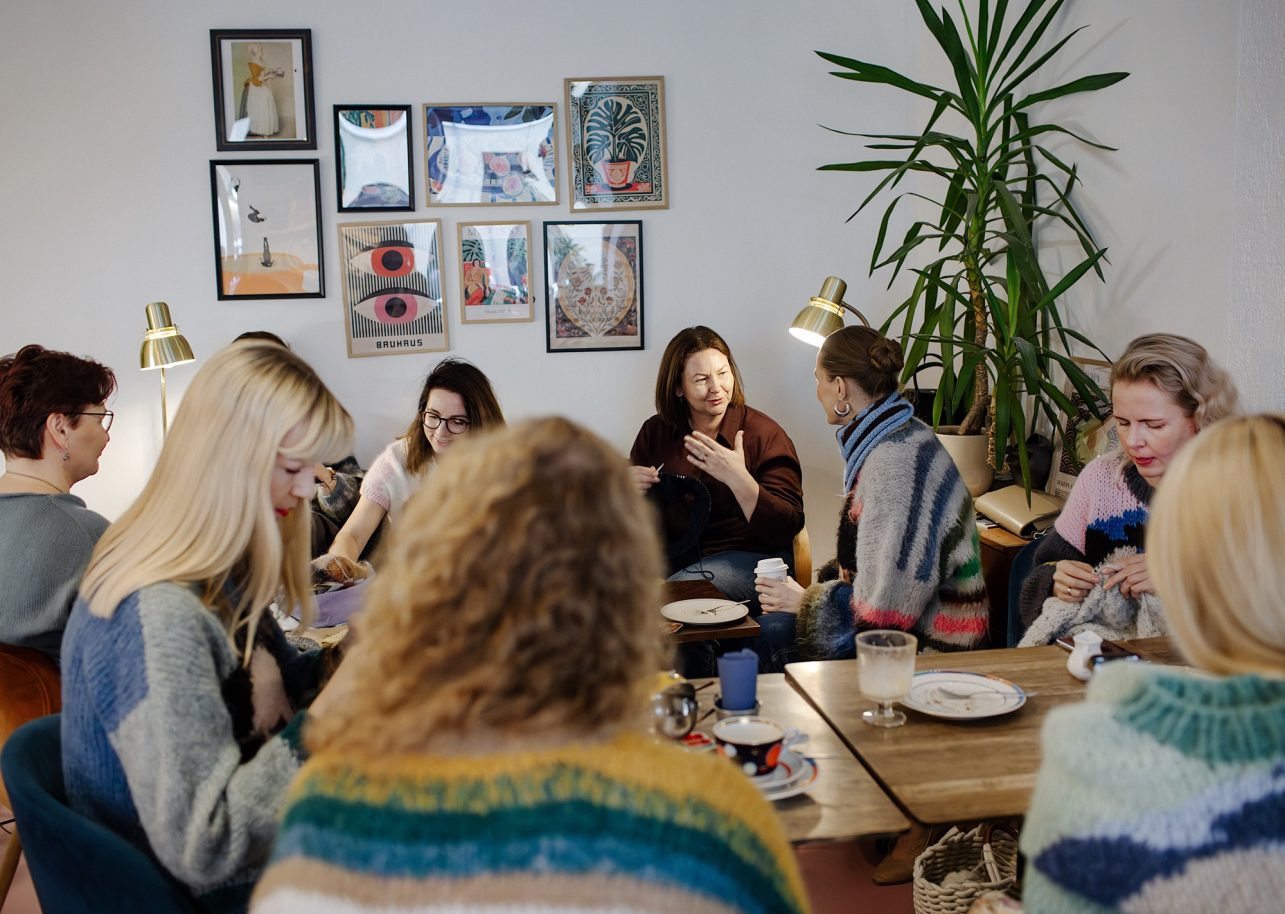
“During a rather dull period of the pandemic, when I had to work from home for a year and take care of my three school-age children, I burned out. Eventually, I realized that I had to create happiness, colors, and warmth myself, and that’s how I started knitting,” thus spoke Gintarė about the beginning of her knitting journey. And a little later, when the war in Ukraine broke out and patriotic feelings grew stronger, the textile artist came up with the idea to knit a series of sweaters featuring portraits of inspiring Lithuanian cultural figures, including Vincas Kudirka, Žemaitė, Barbora Radvilaitė, Jonas Mekas, and M. K. Čiurlionis.
She had almost no like-minded people, but she still wanted to share her experiences, processes, and creations, so the Knitomanija social media account was born, bringing many new faces into Gintarė’s life: spinners, weavers, and knitters, who, through these slow crafts, confront the culture of fast consumption and choose a sustainable and mindful path instead.
We all leave our social or professional roles behind, forget about everyday worries, and immerse ourselves in yarn.
Speaking about her beginnings, the knitter clarified that although she has not put down her needles for the past three years, she learned how to knit as a child from her grandmother. “I often spent summers in a village in Dzūkija, where in the evenings five village women gathered to watch TV shows, knit together, and discuss village gossip. Knitting for them always meant community – if not through knitting together, then through giving knitted handicrafts to loved ones, through care and tenderness. And for me, too. It is not just a way of making clothes, but rather a means of spreading the word about Lithuanian cultural figures, a slow lifestyle as an antidote to fast fashion, and sustainable choices.” In addition, Gintarė actively collaborates with Lithuanian spinners, of whom there are only a few left. She often buys their hand-spun and dyed yarn. During the conversation, in addition to knitting as a sustainable craft, Gintarė repeatedly emphasized the importance of the community – the one that came together precisely for knitting, because it is no longer necessary for people to knit alone, at home.
“A couple of years ago, more than a hundred people gathered at the first knitters’ meeting in a Vilnius café. This showed that people want to join communities based on activities that are close to their hearts. Just as cyclists or runners establish sports clubs and train together, so do needlework enthusiasts meet, create together, share joys, and yarn. Cafés and art institutions – for example, the MO Museum – even organize special knitters’ afternoons,” the interviewee says.
Gintarė assures that currently knitters’ meetings are held once a month in many Lithuanian cities, of course, in Kaunas too. This October, at the invitation of Kaunas knitting enthusiasts Inga and Agneta, about thirty knitters gathered at the café Coco in Kaunas, among them the heroine of this article and our photographer, Svetlana. “It was nice to see that many of them wore M. K. Čiurlionis sweaters that they had knitted themselves. The most diverse people gathered there, including a tired mother of many children and an ambitious president of the Rotary club. We all leave our social or professional roles behind, forget about everyday worries, and immerse ourselves in yarn; we consult each other and share observations. This is how, in addition to knitting sweaters, friendships are built,” Gintarė says.
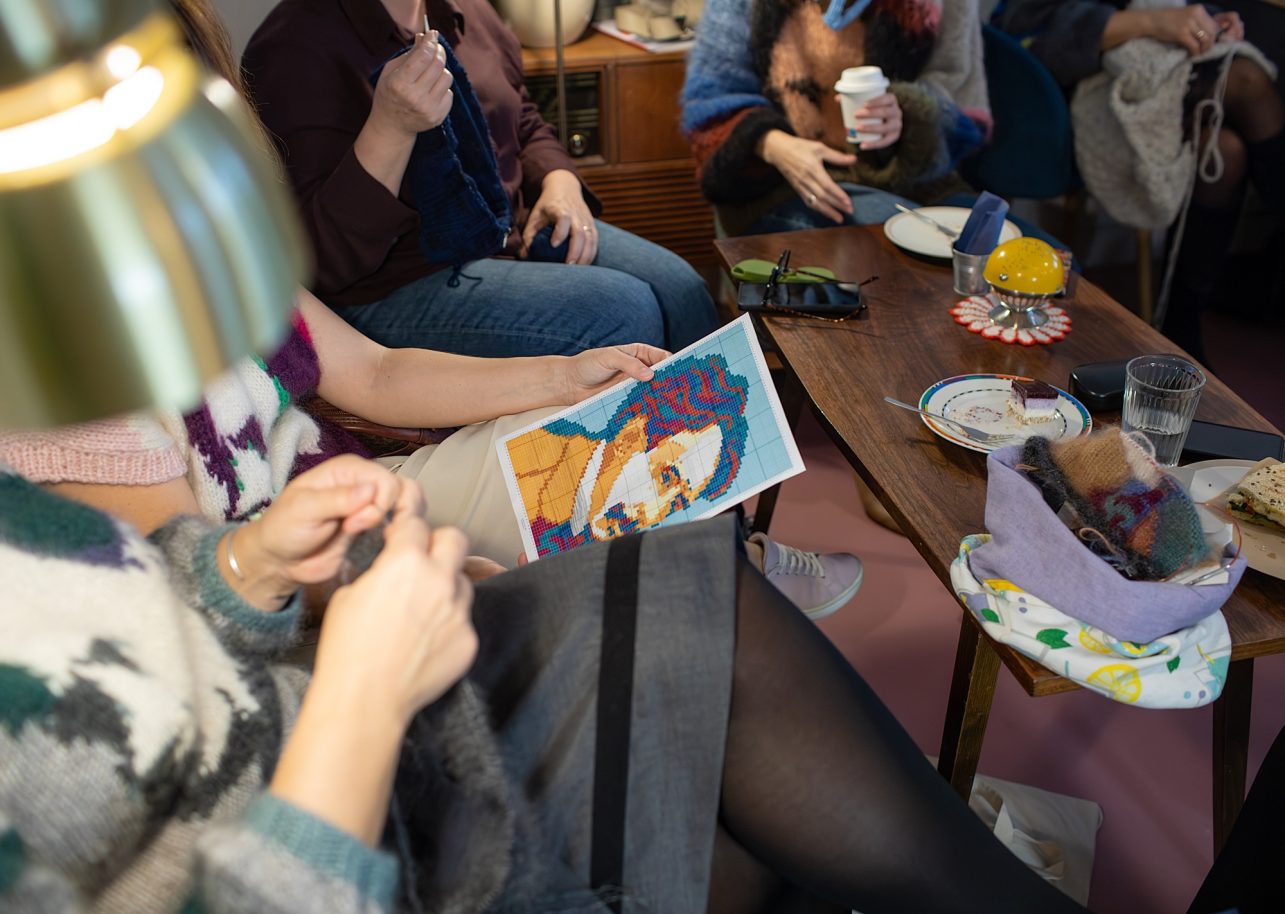
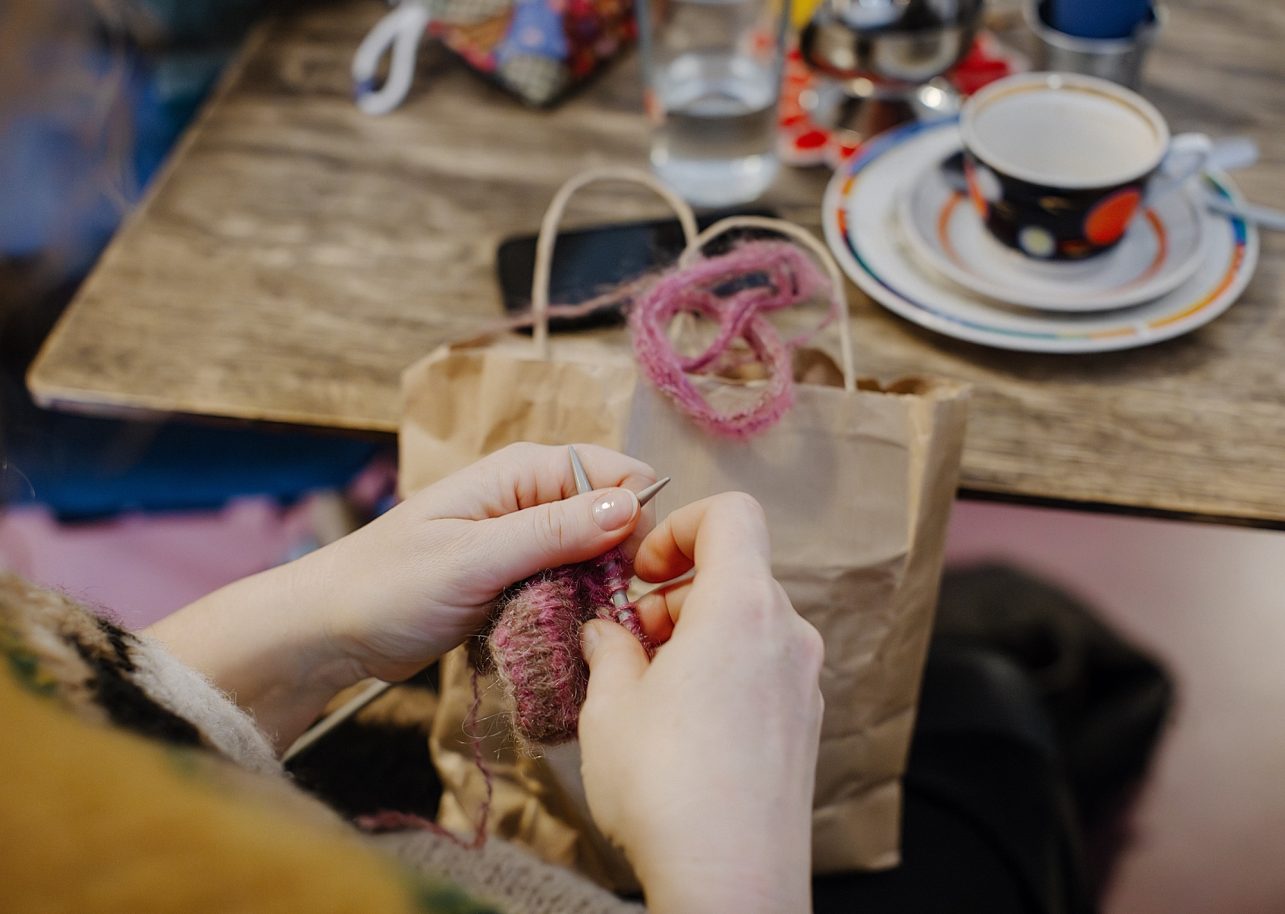
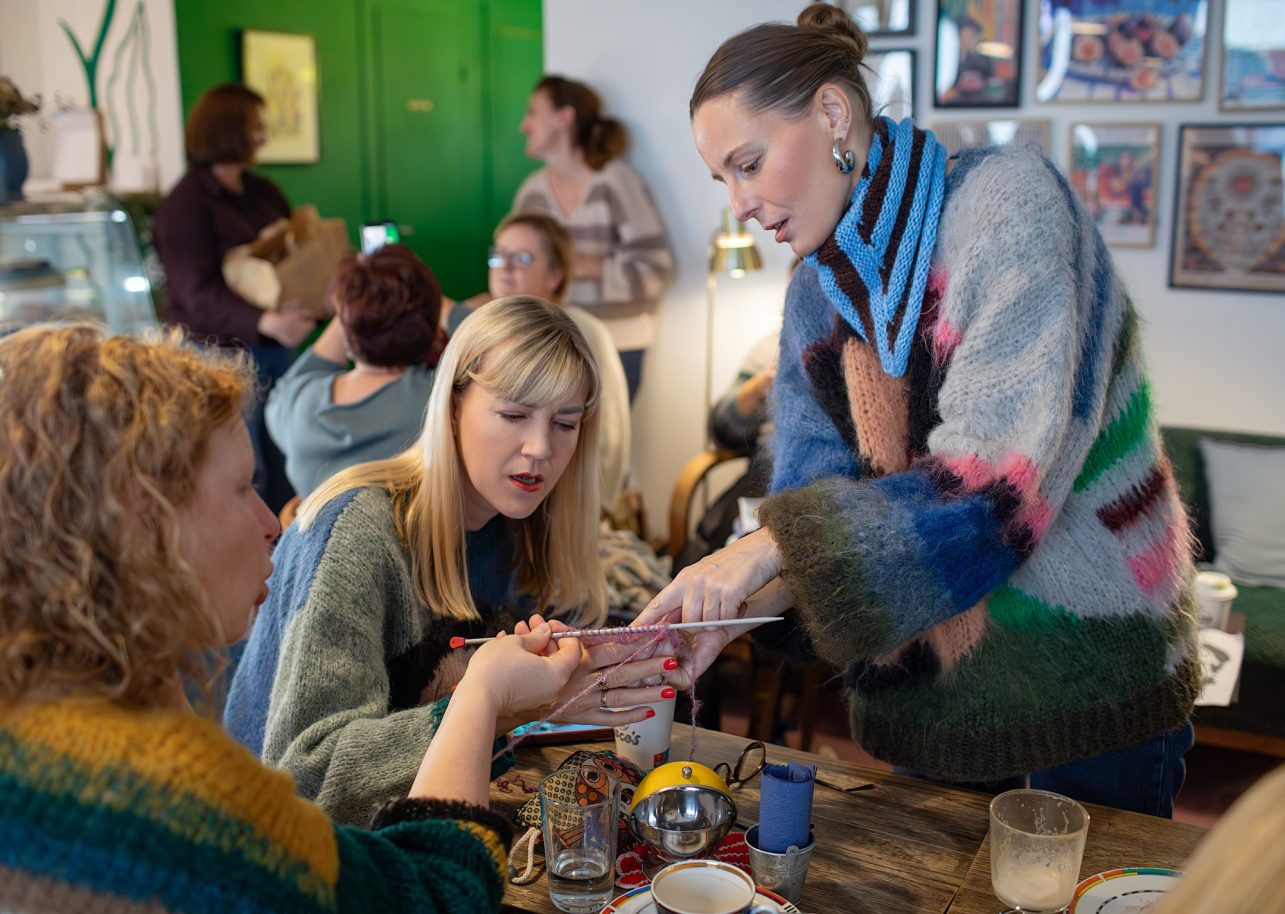
The culprit behind this story mentioned the M. K. Čiurlionis sweaters for a reason – at the beginning of summer, during one of the knitters’ gatherings, their then-organizer and active community member Daumantė Strelčiūnienė proposed starting a joint initiative: to knit sweaters inspired by M. K. Čiurlionis. The idea spread on social media under the hashtag #mezgamČiurlionį (“knitting Čiurlionis”). “I created a simple and clear knitting pattern, and later, in July, we invited the community to knit a meaningful sweater from leftover yarn – without buying anything new – by the time of Čiurlionis’ birthday. “We expected maybe a few dozen enthusiasts to join, but on the very first day, more than a hundred people joined the private Facebook group, eager to knit such a sweater. Now there are more than 1,500 of them. Even today, the group is full of lively discussions about yarn, needles, and the intarsia knitting technique,” the textile artist says with a smile.
You don’t need ten sweaters, one – the best one – is enough.
Over time, the initiative gained even more meaning – at the end of September, more than 70 knitters, dressed in their Čiurlionis-inspired sweaters, visited the M. K. Čiurlionis National Museum of Art in Kaunas. The museum welcomed them warmly and even gifted them an educational program. “I believe that after visiting the museum, the knitters will see new and deeper meanings in their sweaters. After all, instead of wearing a T-shirt that says “Whatever”, you can wear a sweater with Čiurlionis’ face and tell every curious passerby about this cultural genius,” Gintarė adds.
While admiring the community that had come together and the beautiful creations they had made, I asked what it was about knitting that so strongly attracted young people. Gintarė observed that lately many have turned to slow creative processes as a counterbalance to consumerist trends and digital noise, and, most importantly, as a way to decide for themselves what clothes to wear and what message to carry. “For some, the joy of knitting lies in the opportunity to step away from the rush of everyday life and experience everything in the here and now; for others, it’s a way to express their values. Moreover, the world is increasingly turning toward sustainability, and responsible people understand that you don’t need ten sweaters, one – the best one – is enough. Especially when you get to choose the fiber, softness, color, collar type, length, sleeve shape, and so many other qualities yourself. It feels like gaining a creator’s superpower,” Gintarė says.
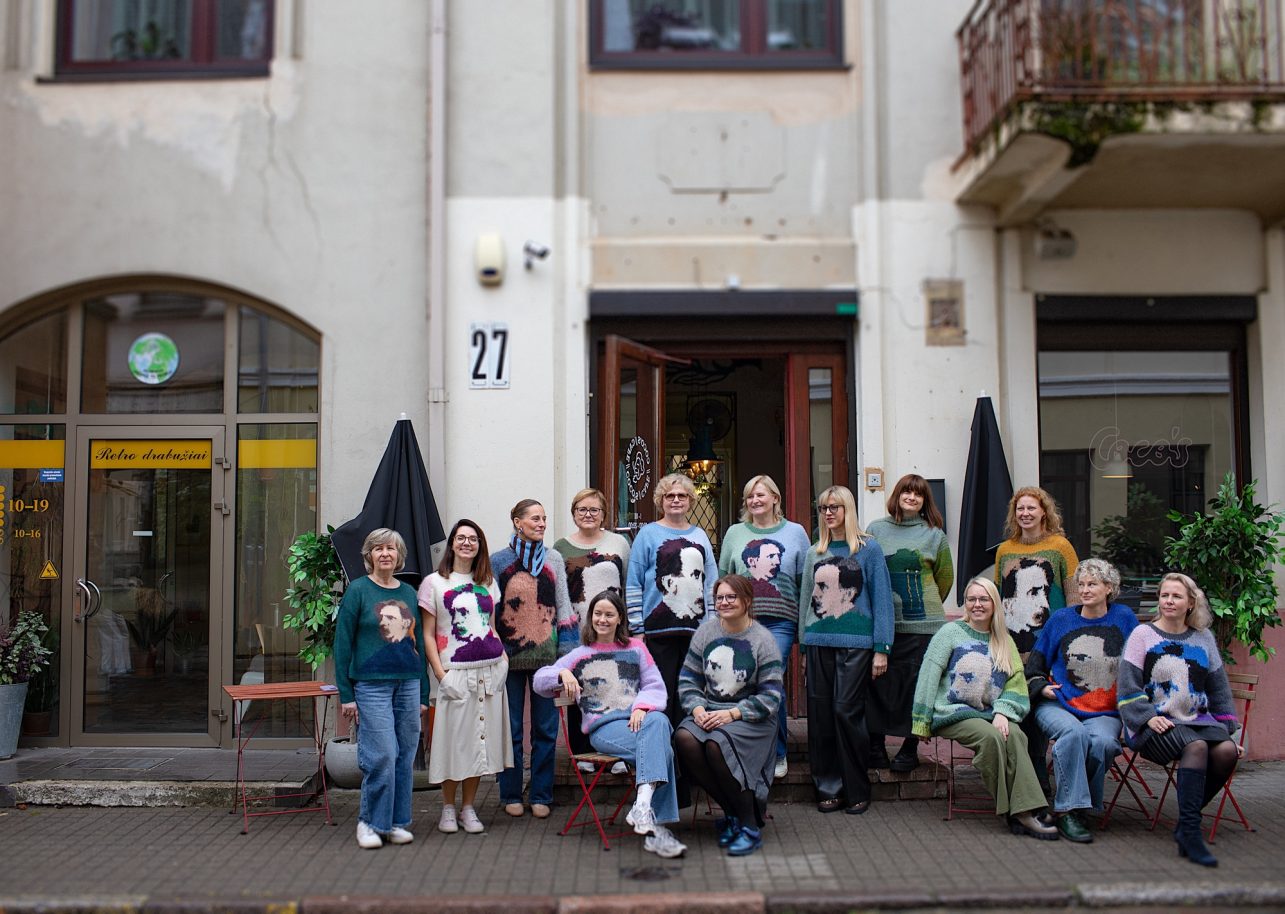
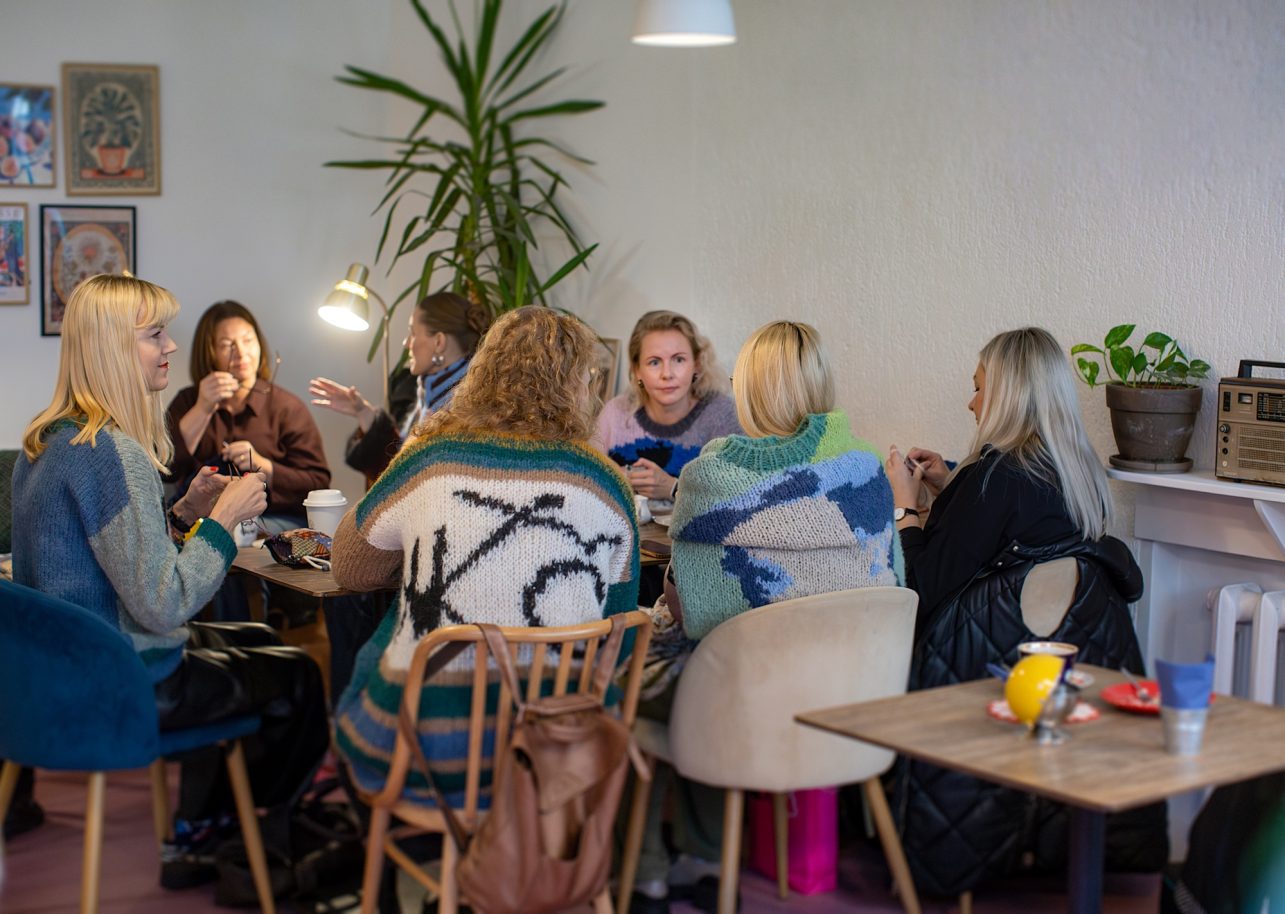
It’s no secret that, beyond the opportunity to spread values and traditions, strengthen community, and honor heritage, creative people devote just as much love and effort to protecting the content they have so carefully cultivated. Over the past month, this has been clearly demonstrated by the entire cultural community of the country, which has come together in assemblies. Knitters, weavers, and other followers of slow crafts are certainly no exception. Gintarė shared that knitting has often become a tool for protest or activism, “During the French Revolution, the famous tricoteuses – women who sat knitting by the guillotine – would quietly observe events as a way of expressing their stance. In the 1970s, red knitted socks became a symbol of the feminist movement in Denmark, and in the 1980s, during the Greenham Common protests, knitting was used as a form of resistance against nuclear weapons. These examples show that knitting isn’t just a pastime for grandmothers; it can also serve as an expression of public stance.”
Following these examples, Gintarė and her like-minded peers have also lent their hands to the cultural protest movement. They took part in a performance in Elektrėnai, peacefully singing traditional Lithuanian sutartinės. “I proudly wear my sweater with Čiurlionis’ face every day. In addition, I’ve created a shawl knitting pattern featuring the symbol “Culture in Danger” and invite all knitters to express their stance through knitting,” Gintarė added.
Speaking about the future, the heroine of this story shared that she plans to continue using knitting as a way to address broader topics. However, what matters most to her is fostering a sense of community while not forgetting either herself or the old Lithuanian knitting traditions. For example, Gintarė is currently working to recreate traditional mitten patterns based on the photographs of Balys Buračas, collecting material about the uniqueness and distinctiveness of Lithuanian knitwear, and considering organizing exhibitions dedicated to knitting. Of course, such exhibitions would serve as a form of dialogue, bringing together artists from other disciplines as well as knitters from the most remote corners of Lithuania. Because, as the joke goes, we Lithuanians are born to knit.
